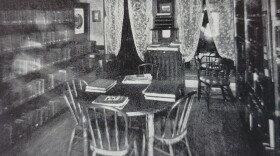Harry Lester was born in Poland in 1879 with the birth name of Maryan Tschaikovsky. He was a cousin to the great Russian composer Pyotr Ilyich Tchaikovsky, although the two probably never met. While still very young, Maryan Tchaikovsky immigrated with his family to the United States. Tschaikovsky was bright, but he was not inclined to sit still in school. Therefore, by the time he turned 16 he left home and joined the circus.
In the circus young Maryan did every job that he could get, and his enthusiasm quickly got him promoted to performer. He changed his name to Harry Lester and worked as a clown, magician, balloon jumper, and in the sideshow circuit as a fire-eater, mind-reader, and sword swallower. While working with sideshow performers, he learned about the art of ventriloquism. Lester read every book on the subject he could get his hands on and mastered the craft well enough that by the age of 20 he started performing as a ventriloquist.
Lester worked with several makeshift dummies during this time, but it was around 1903 in Chicago that he had the Theodore Mack Company carve his most famous dummy, which he named Frank Byron, Jr. With Frank Byron, Jr. at his side, Harry Lester assumed the name The Great Lester. He became a sensation, toured Europe, and became one of the highest-paid and in-demand performers of the vaudeville circuit.
In 1913, Lester’s vaudeville tour brought him to Rhinelander to perform in the new Majestic Theater. He fell in love with the area and with a local girl named Charlotte. Harry Lester married his beloved Lottie and moved into a house on North Stevens Street. Although Lester continued performing the vaudeville circuit, Rhinelander became his permanent home. He was in town full-time during the summers and came back during lapses in performance dates during the colder months.
Lester loved children, and he and Lottie adopted two, a boy named Arnold and a girl named Jessie. Even when on break from touring, Lester was active in the community. He was a member of the local Elks and Masonic Lodges and always found time to perform benefits for local audiences across the Northwoods.
Lester was a vaudeville headliner throughout the 1920s, but by the end of the decade he suffered three setbacks from which he never fully recovered. He took heavy losses in the stock market crash of 1929; and was forced to file a libel suit against the scandalous Hollywood film, The Great Gabbo, for its false claims of being based on his life. But worst of all was the death of his beloved wife Lottie.
Lester and his children moved to a lake house in the Newbold area and made the Northwoods their home through the 1930s. He continued traveling and performing, but his vaudeville ventriloquist act seemed increasingly old fashioned compared to talking films.
After the war, Lester moved to Los Angles and offered ventriloquism lessons in a studio on Hollywood Boulevard. In 1956, at the age of 77, he needed an appendicitis operation. There were complications, and he did not recover.
Today Lester’s ventriloquist dummies are on display at the Vent Haven Museum in Kentucky.









